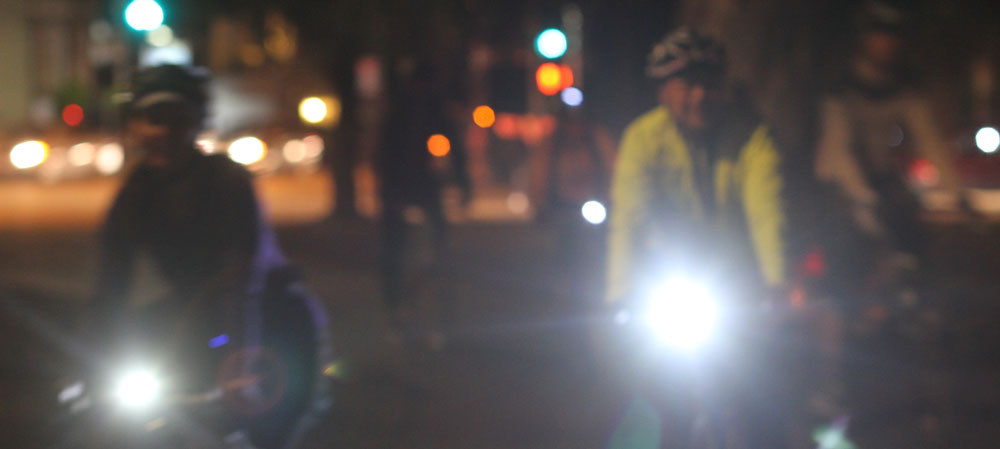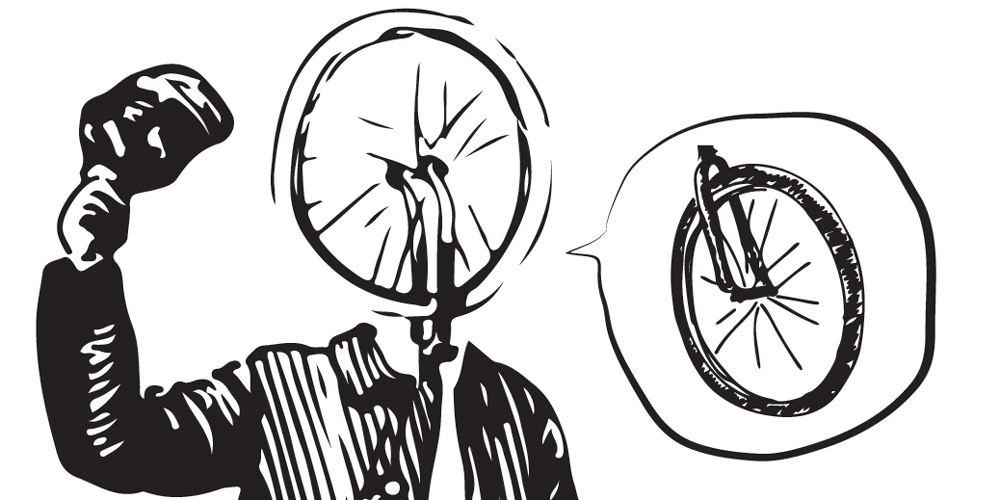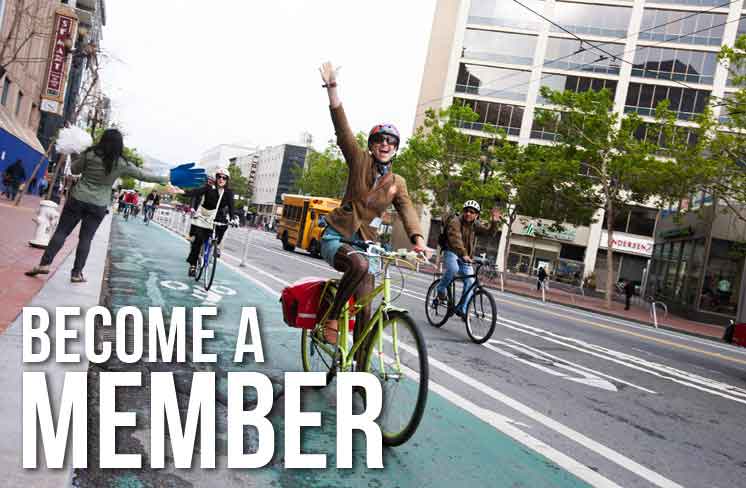Wheel Talk for Wheel People is a monthly advice column written by Christopher White, our adult education program coordinator. Though bikes, biking and getting around SF are our areas of expertise, feel free to ask anything! To submit your questions, please click here.
Wheel Talk, can you settle a dispute? My partner from Seattle insists that a blinking front white light is an unsafe distraction, while I believe that the blink setting increases awareness and visibility for drivers in their rear view mirrors. What do you think? — Blinky in the Bay
Dear Blinky in the Bay: This is a great question, and one that I talk about in our Night and All-Weather Biking class, which is starting up again on October 16, just in time for shorter days and (with any luck) approaching rain.
As someone who has been hit by someone driving because they “just didn’t see me” in broad daylight, I know too well that inattentional blindness is a real thing. I, in fact, aim to “distract” people behind the wheel, if just for a moment, so that they are fully, consciously aware that I am there and need to be treated safely and courteously. A blinking light draws the eye and attention better than a solid light, particularly on nighttime urban streets where visibility is decent and there are likely many lights giving different information to people sharing the streets. Just make sure you are pointing your front light down a bit so that you’re not blinding people, especially if it’s particularly bright.

Before you do a victory dance, Blinky, I have to add a caveat. On poorly lit streets, put your lights (front and rear) into steady mode. Studies show that it is easier for the human eye to track (judge distance, movement, and direction of) a solid light than a blinking one. Also, on darker streets your solid front light will keep you from running into things! Finally, in Washington state, where your partner is from, flashing front lights are actually prohibited — so it’s no surprise they think they’re dangerous.
We’re currently doing some research on studies about possible increased safety of blinking lights even during daylight hours. More on that in a future column! And for more on the bike lighting, I addressed a question a few months back about even more “distracting” kinds of lighting, such as animated LEDs on wheels.
Wheel Talk, I’ve always been under the impression that it is illegal to have the driver side and passenger side windows of an automobile tinted to any degree, yet I’m seeing more and more cars with all their windows tinted. This makes it impossible to make eye contact with the driver, whether I’m cycling, walking, or driving, which is a big part of defensive sharing of our streets. What gives? —Dark Inside with Nobody Home
Dear Dark Inside: Since this is a bike advice column, I want to start with the bikey part of your question. I love that you raise up the importance of eye contact when it comes to keeping yourself safe while biking city streets. You’re absolutely right: when you make eye contact with a person behind the wheel, you know that that person has seen you as well. This is important in our hyper-distracted age. It bears repeating: inattentional blindness is a real phenomenon. Being in the line of sight of a person driving doesn’t guarantee they actually see you; making eye contact probably does.
In that moment of eye contact, you and the person behind the wheel can have a moment of silent communication about who is going to do what. And what a great opportunity for the folks on both sides of that connection to remember that we are all people, not just drivers and bikers. This reminder is hugely important for making the civic space of our streets more respectful, and therefore safer.
But to answer your question about tinting: California Vehicle Code states that no object or material may be affixed to windshields, and then gives an avalanche of exceptions. Side windows may be tinted up to 88% light transmittance… but if it tears or bubbles, it’s prohibited again. A provision added last year allows additional tinting with a doctor’s note stating that you need it for health reasons. It’s complicated to determine the legality of an individual car’s window tinting, and I’d guess that most police officers don’t bother checking.
How should we behave when eye contact is impossible, as when window tinting blocks our view? With an abundance of caution. Keep your distance and watch the movement of the car for other cues as to its future behavior. Learning to anticipate what other people on the street will do based on a variety of information is one of the most important tools we have to stay safe.


